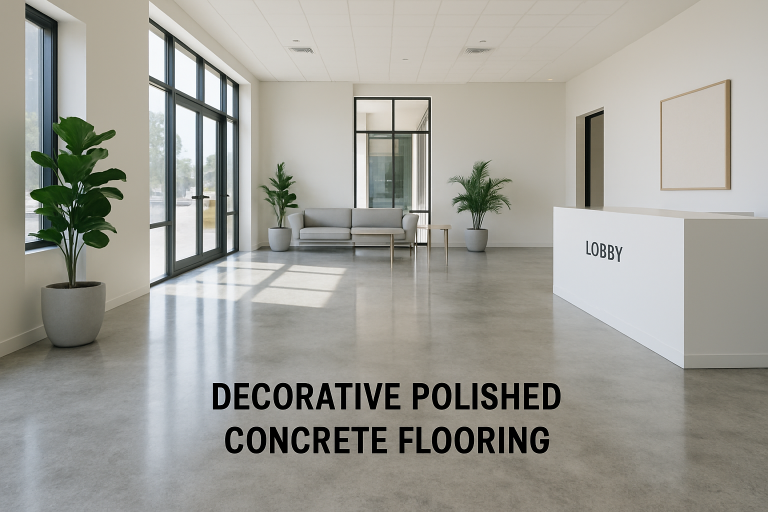Concrete’s enduring popularity in commercial construction stems from a rare mix of practicality and creative potential. Businesses in need of commercial flooring Los Angeles often find few materials as adaptable as concrete, which offers modern, sustainable, and visually appealing solutions. From bustling retail centers to company headquarters, designers and developers lean on concrete for its longevity, affordability, and limitless finishes to suit ever-evolving trends. With a rising demand for floor surfaces that blend design, performance, and durability, many project leaders turn to regional specialists to achieve the right results.
Modern Design Trends in Commercial Concrete Applications
Commercial architecture today is about curating memorable, branded environments that do not compromise on robustness. Recent advancements in concrete finishing unlock new possibilities, transforming concrete floors and surfaces into focal points of design. Techniques such as stamping, scoring, and color staining can replicate the upscale look of marble, wood, or even metallic finishes. Top designers utilize these finishes to evoke luxury and sophistication while leveraging the practical benefits of concrete. Custom-mixed aggregates, polished finishes, and embedded graphics also allow businesses to infuse personality and clear branding into their physical spaces. Whether it’s a tech startup seeking an industrial chic effect or a boutique hotel aiming for warm tones and inviting textures, concrete’s malleability ensures that vision and functionality go hand in hand.
Durability and Economic Benefits
Longevity is a critical factor when choosing flooring for high-traffic commercial spaces. Thanks to its exceptional compressive strength, concrete can withstand constant foot traffic, rolling loads, and the daily wear common in busy environments. As noted by The Spruce, a well-maintained concrete floor can last for decades, often outlasting other materials while offering impressive long-term value. Compared to carpet, tile, or vinyl, maintenance and replacement expenses are far lower, with lifecycle costs averaging up to 60% less.
Beyond durability, concrete’s smooth and seamless finish reduces tripping hazards and allows for efficient cleaning, making it a practical choice for facilities such as hospitals, universities, and shopping centers where safety and upkeep are top priorities.

Sustainability and Environmental Considerations
As sustainability becomes a top priority among commercial developers, concrete emerges as a versatile eco-friendly material. Its thermal mass helps stabilize indoor temperatures, reducing the need for energy-intensive heating and cooling. With the advent of “green concrete,” which incorporates recycled materials such as fly ash, slag, or even crushed glass, projects can significantly reduce their environmental impact.
Innovation in Concrete Finishes
Gone are the days of dull, utilitarian concrete surfaces. Advances in finishing methods—such as diamond polishing, acid staining, sandblasting, and custom coloring—mean that concrete can now match any design vision. Polished concrete adds a lustrous, light-reflective quality ideal for upscale retail or open-concept offices. Decorative aggregates, colored dyes, and embedded elements make every floor unique, offering endless possibilities for distinctive commercial branding. Textured and slip-resistant surfaces add functionality, especially crucial for lobbies, corridors, and entryways.
Maintenance Tips for Long-Lasting Concrete
The secret to achieving sustainable, attractive concrete surfaces lies in a proactive maintenance plan. Routine care—including frequent sweeping to remove debris, damp mopping, and resealing surfaces as needed—will protect against staining and surface wear. Quickly addressing minor cracks or chips can prevent costly structural issues down the line. Installing walk-off mats at entrances and opting for non-abrasive cleaners will help preserve the floor’s finish and extend the life of any decorative treatments. Scheduling professional inspections ensures that the concrete maintains its durability and beauty year after year.
Future Outlook: Concrete in Commercial Infrastructure
The future of concrete in the commercial sector is bright. Ongoing research into self-healing and carbon-neutral concretes promises to make this material even more indispensable in sustainable construction. Innovations such as 3D-printed concrete structures and advanced fiber reinforcement are poised to deliver even greater strength, flexibility, and environmental performance for tomorrow’s workplaces and public spaces. For businesses seeking enduring value and creative impact, concrete will remain a foundational choice well into the future.


